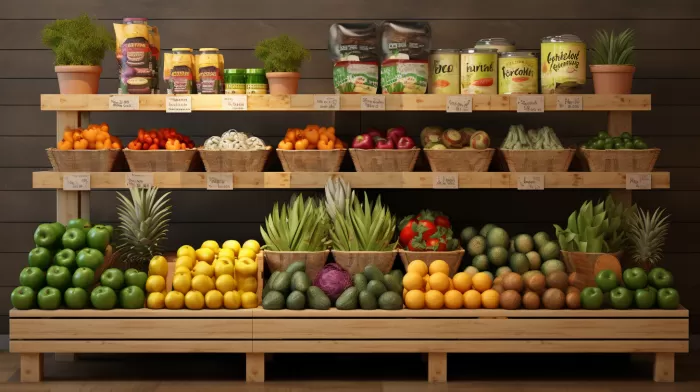Eating healthy is crucial for maintaining optimal health, but it can be difficult in today’s world. With so many misleading labels, processed foods, and pesticides, finding truly natural and healthy food options can seem impossible. In this article, we will break down some common misconceptions and provide tips on how to navigate the tricky landscape of today’s food industry.
Decoding “Natural” Food Labels
You have probably seen many food brands that contain the words “natural” or “all natural” in their labeling and marketing campaigns. However, the food inside the packaging may be far from natural. This is because there currently is no legal definition for the use of the term “natural.”
The U.S. Food and Drug Administration (FDA) states that it is challenging to define “natural” from a food science perspective since most food products have been processed in some way. At the moment, the FDA has not developed a precise definition for the term “natural” or its derivatives. As a result, the agency has not objected to the use of the term if the food does not contain added color, artificial flavors, or synthetic substances. However, it doesn’t mean that every product labeled “natural” is truly natural.
Don’t Rely Solely on Brands
When shopping for healthier food options, people may rely on specific brands or grocery stores to provide them with organic and non-GMO choices. While stores like Whole Foods and Trader Joe’s do carry a variety of organic and non-GMO products, they do not exclusively sell such items.
When shopping, be cautious about the labels marked “conventional.” Conventional often refers to food that is over-processed or sprayed with chemicals – and is not the healthiest option for consumption. It’s essential to always read the labels on food items and look for organic and non-GMO options.
The “Dirty Dozen” List
To help avoid conventional produce and opt for healthier options, pay attention to the annual “Dirty Dozen” list. This list comprises the most pesticide-laden produce, making it essential to choose organic versions of these items. You can view the current Dirty Dozen list at the Environmental Working Group’s website.
The Official Definition of “Processed”
While many people are aware that it’s better to avoid packaged or processed foods, the definition of “processed” isn’t clear-cut. The American Society of Nutrition (ASN) has a less strict definition of processed foods than many health-conscious eaters might want.
According to the ASN, both fresh and processed food make up vital parts of the food supply. Processed food contributes to both food safety (ensuring that sufficient food is available) and nutrition security (ensuring that food quality meets human nutrient needs). However, this definition does not take into account the potential harm caused by chemical sprays or other manufacturing processes.
Tips for Choosing Healthy Food Options
As consumers, we rely on governing bodies to regulate and designate healthy and safe foods. However, we must take this responsibility into our hands to ensure we’re making the healthiest choices possible.
- Buy organic and non-GMO items as much as possible.
- Avoid conventional produce on the “Dirty Dozen” list unless labeled organic.
- Read the ingredient labels, not just the packaging copy, to look for and avoid food coloring, trans fats, hydrogenated oils, corn syrup, and preservatives.
Adapting to these changes may seem challenging, but after a few shopping trips, you’ll learn which brands and items are healthiest, making your future grocery store visits a breeze.
By staying informed and aware of the food choices you’re making, you can overcome the challenges of today’s food industry and maintain a healthier diet.



